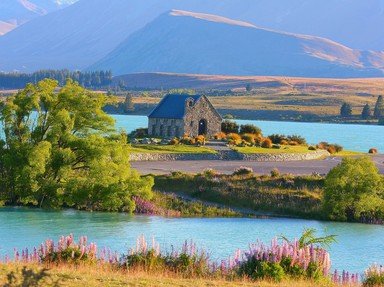Quiz Answer Key and Fun Facts
1. Although the discovery never resulted in a rush, gold was found in New Zealand fairly soon after the Treaty of Waitangi was signed. What year was that?
2. Where was gold first discovered in the South Island?
3. Where was gold first discovered in Otago? For those of you simply guessing, Otago was where the main "rush" occurred during the 1860s.
4. What was the name of the location where gold in large quantities was first discovered in Otago?
5. When the discovery of gold at the Tuapeka was announced, Dunedin nearly emptied as people rushed to the new goldfield. How was the announcement actually made?
6. By August 1861 most of the good "ground" at the Tuapeka had been claimed and newcomers were forced to work for existing miners or to look further afield. To try to clear the way, one rather foolish man falsely announced the discovery of a new and lucrative goldfield some distance away. Hundreds abandoned their claims and left for the new "goldfield". Where was it?
7. The next great real rush was in mid-1862 to the Dunstan. Two American prospectors, Hartley and Reilly, dumped 87lb of gold on the desk of the gold receiver in Dunedin in August, and the news rapidly got out. What was the name of the river that ran through The Dunstan?
8. Because of the limited riverside ground available (and the prospectors' inexperience with Otago's geology), prospectors fanned out through the steep and trackless country to the north up the river from the Dunstan looking for more gold. A small group of prospectors found rich pickings on the Arrow River. The township that sprang up eventually became Arrowtown. But what was it called initially?
9. It turned out that there was gold everywhere in the Wakatipu region, but that region had definite boundaries. The Crown Range, to the east, appeared to be the "gold limit" on that side, and the lake itself limited the auriferous region to the west. But there was one, sole, exception. What river on the eastern watershed of the Crown Range turned out to be a goldfield?
10. Gold was first discovered in the Shotover River by a shearer working for W.H. Rees on Queenstown Bay. Despite promising not to, this worthy and his mate slipped away on Sundays to try their luck. The man - and the spot - are remembered even today, because the place he struck gold is still called Arthur's Point. But what was his full name?
11. It is said that the Shotover was the richest ever gold river up until the Klondike rush forty years later. It was certainly just as inaccessible as the Klondike, if not as cold in winter. But the very richest stream of all was one of the Shotover's tributaries, up near the northern limit of the Wakatipu goldfield. What was its name?
12. The West Coast Gold Rush, which began in 1864, started off as more of a West Coast Gold Dawdle following the discovery of payable quantities of gold in a tributary of the Taramakau River. What was the name of the tributary?
13. Although the West Coast rush was slow to start, by Christmas of 1865 there were some 29,000 miners (about 12% of the entire European population of New Zealand at the time) working the creeks and beaches of the West Coast. Hokitika became the centre of coastal activity and had a richly-deserved reputation for lawlessness and riotous living. This was at least partly because of the sheer number of hotels plying the miners with alcohol and other entertainment. Approximately how many hotels did Hokitika have at the end of 1865?
14. Today, the gold rush town of Reefton is a rather sleepy and pleasant place where you can sip latte or cappuccino and slap sandflies while taking a break in your journey from the Coast to Nelson. But it wasn't always called Reefton. What was the town's first name?
15. There are (currently) two large commercial gold mines operating in New Zealand. One is Martha Hill, in the North Island. The other is 60 miles from Dunedin. What is the name of the area?
Source: Author
Capfka
This quiz was reviewed by FunTrivia editor
bloomsby before going online.
Any errors found in FunTrivia content are routinely corrected through our feedback system.

